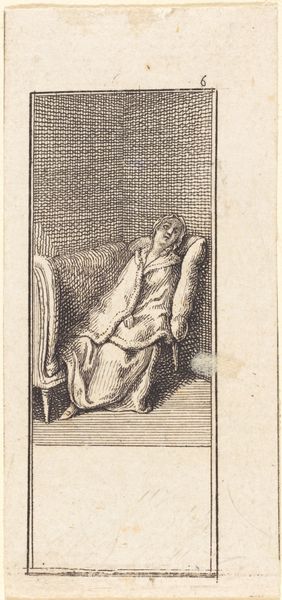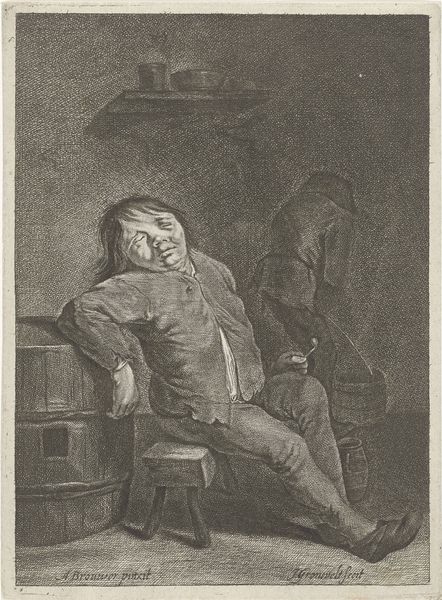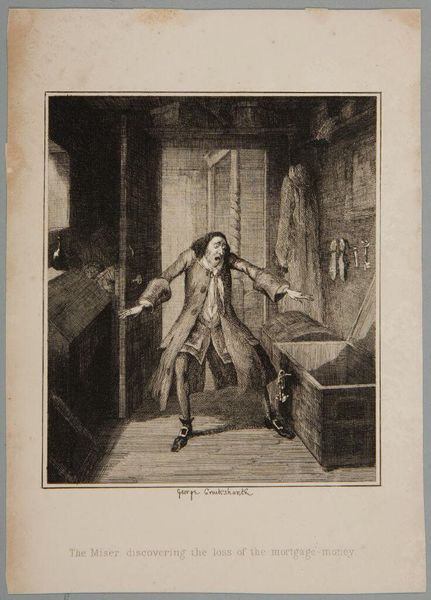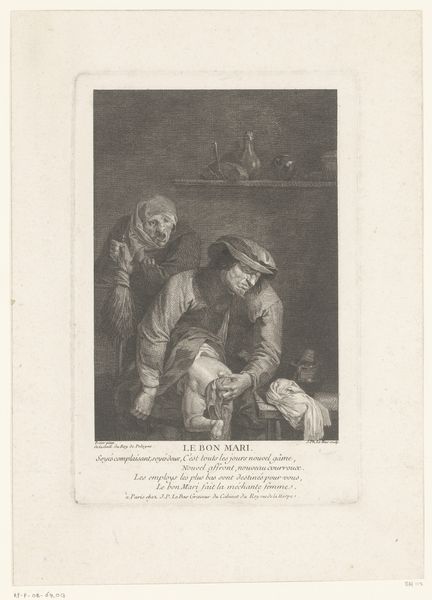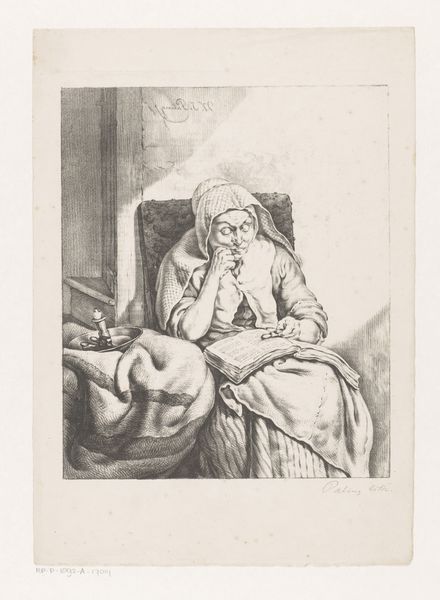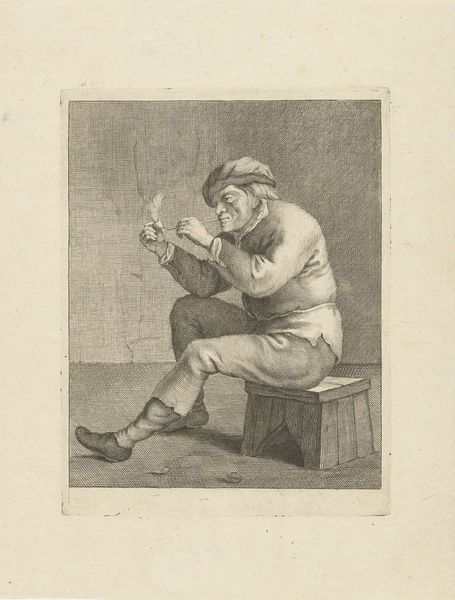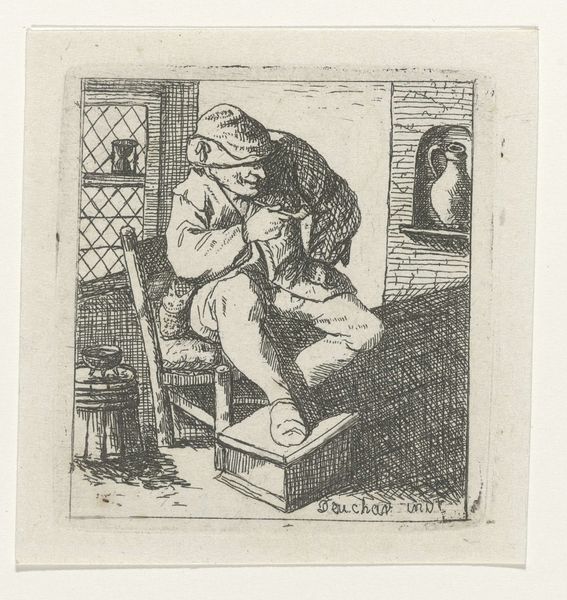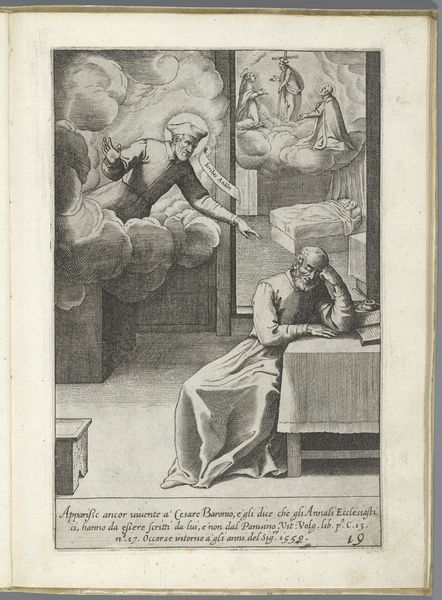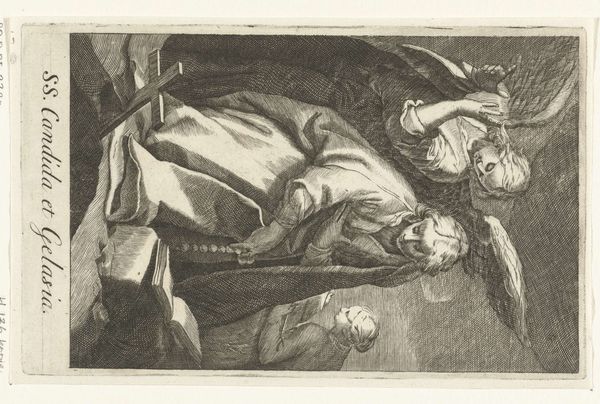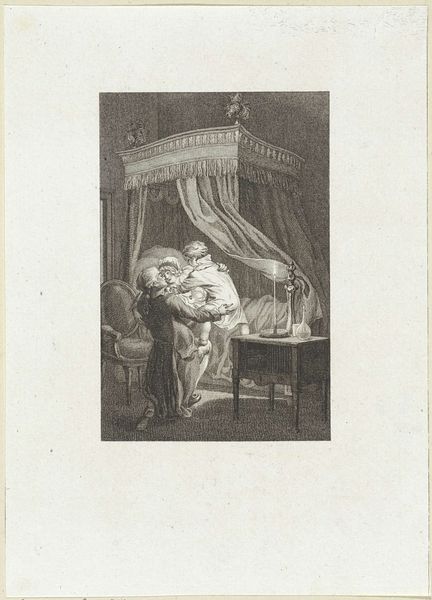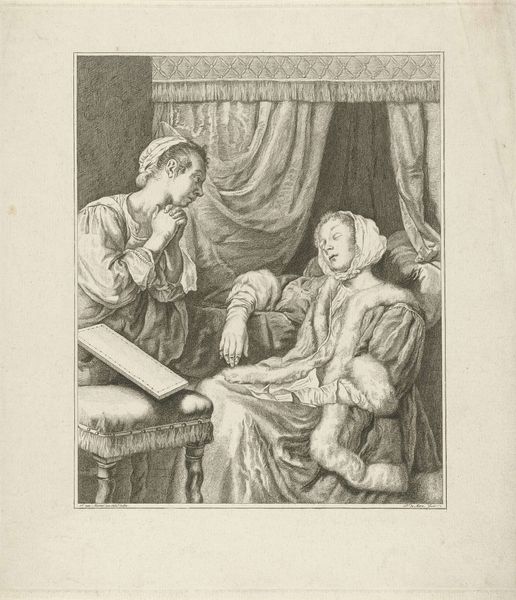
print, engraving
#
portrait
#
dutch-golden-age
# print
#
old engraving style
#
genre-painting
#
engraving
Dimensions: height 190 mm, width 140 mm
Copyright: Rijks Museum: Open Domain
Curator: We're looking at "Luiheid," an engraving by Jean de Weert, created sometime between 1636 and 1700. It presents a figure of indolence personified. Editor: My immediate impression is one of exhaustion and perhaps subtle commentary on the state of rest and work in Dutch society. The way he's slumped—it’s a pose of utter surrender to sleep. Curator: The piece is striking for its era, focusing on the everyday. De Weert captures what one might call a 'genre scene.' It deviates from depicting prominent members of society and grand historical narratives, to reveal scenes from normal life. How do you think this impacts the viewer? Editor: Significantly. As a print, "Luiheid" would have been relatively accessible. Consider the material conditions of the time. The affordability of prints allowed for a wider distribution of ideas about labor and leisure among the merchant classes. The details in the subject's attire - perhaps a craftsman? It provokes thought about the relationship between work, exhaustion and status within this societal tier. Curator: True. Beyond the mere image of someone asleep, consider the allegorical weight of 'sloth'. This symbol extends beyond the individual, reflecting on a wider societal understanding. The work contrasts with images of civic responsibility and hard work, as upheld during the Golden Age. Does this imply that de Weert sees this scene as problematic? Editor: Possibly, although, let's not overstate the negativity. The material depiction - the lines making up the soft pillow against the wooden bench - brings a degree of human empathy to the 'sin' of sloth. The engraving's sharp contrasts invite introspection. It pushes viewers to reconcile labor demands and our need for reprieve, particularly through mass consumption of engravings like this. Curator: I agree. And maybe here lies the crux. The simple image of 'sloth', as immortalized by de Weert, reflects that ongoing cultural and social negotiation between duty, pleasure and their complicated interplay. Editor: Precisely. By considering the materiality and social context, the layers begin to peel back revealing something richer than a mere depiction of a sleeping person.
Comments
No comments
Be the first to comment and join the conversation on the ultimate creative platform.

